2. Input Data
After successfully logging in, you can upload input data for the evaluations.
2.1. Excel files
The standard method is using an Excel file, the format of which is defined in a template. You can download the template using the menu item “Download template”.
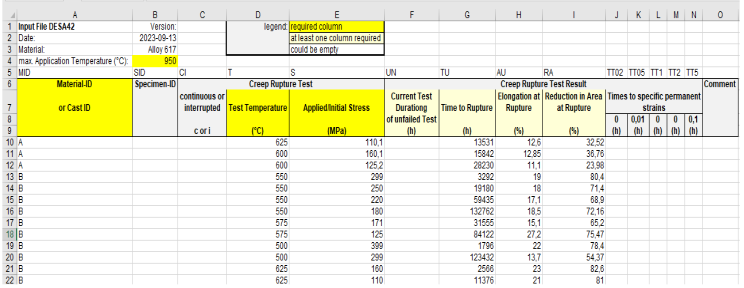
The yellow columns are mandatory fields that must not be empty.
After uploading the input file, you will see whether the file was successfully stored in the private, secure data area of the server that only you have access to.
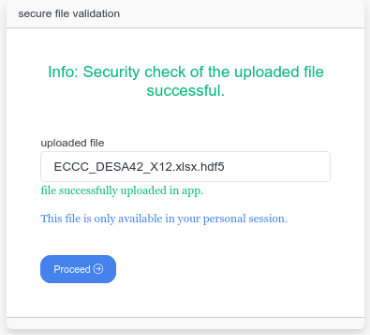
If you continue, an overview of the available data from the uploaded input file is displayed.
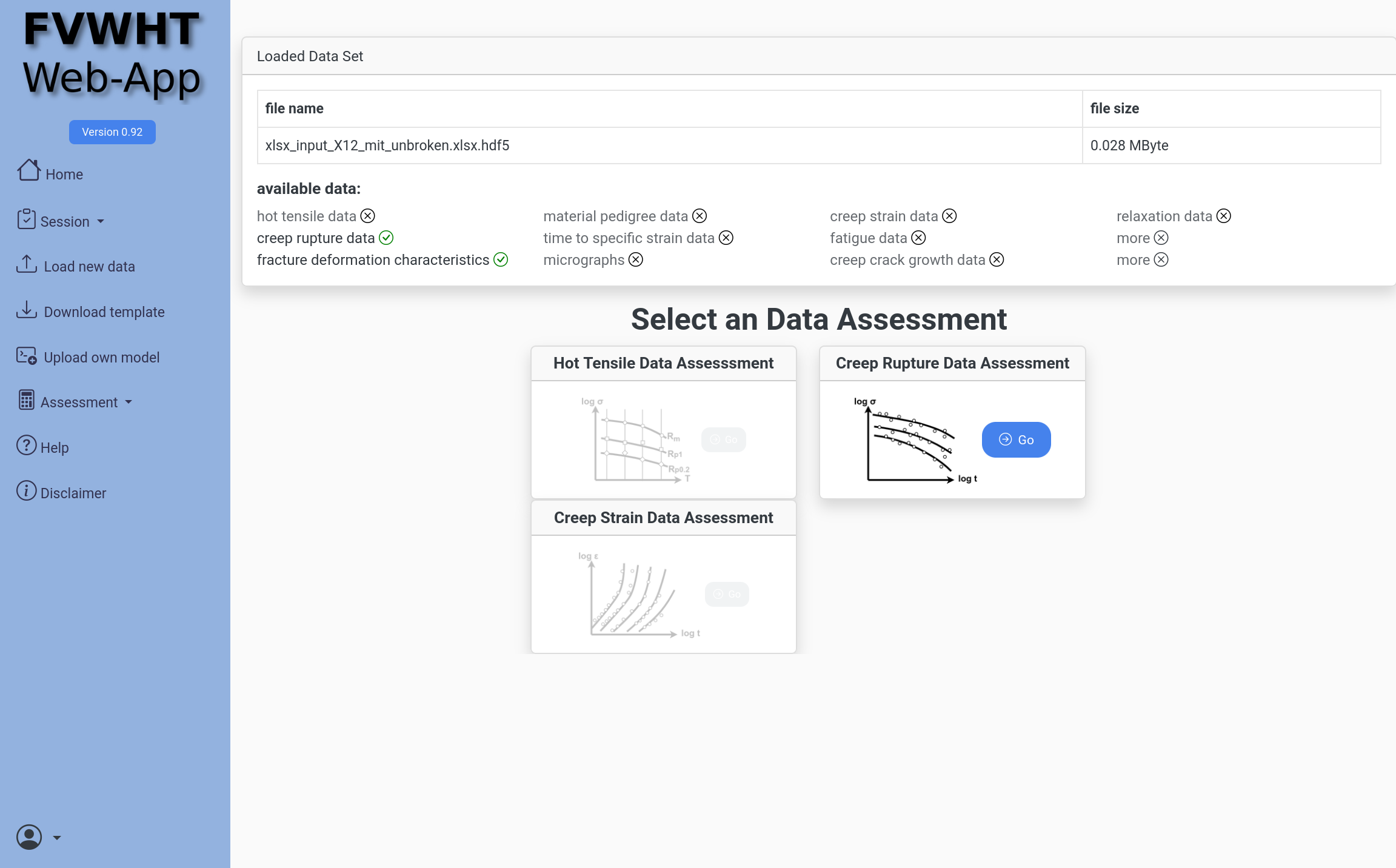
The next page is reached with the Go button, which displays all relevant data for the assessment to be carried out. The results of the pre-assessment for available temperatures, casts and fracture times required for the Post Assessment Tests are also shown here.
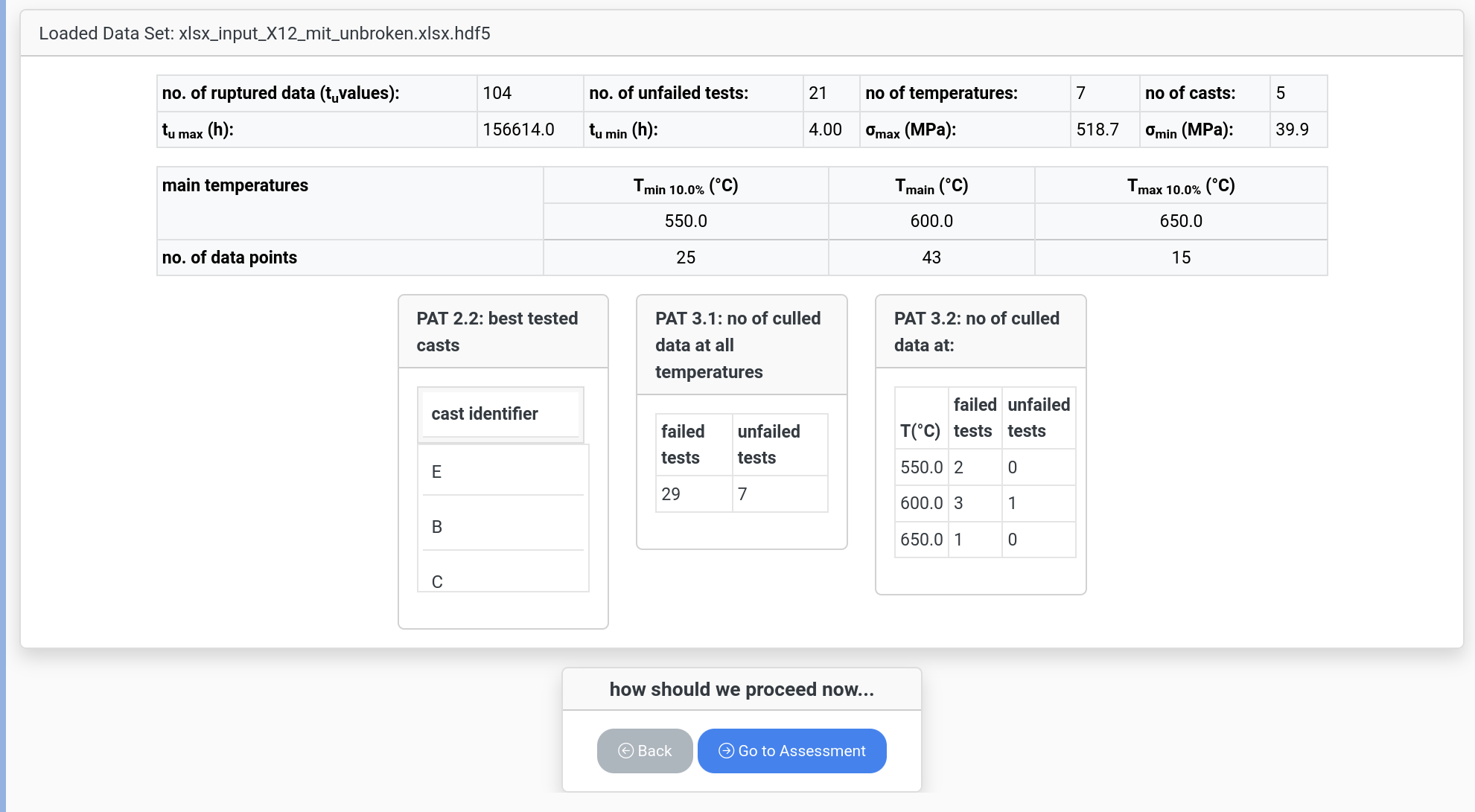
To carry out the CRDA, click on “Go to Assessment”
2.2. HDF5 files
The Hierarchical Data Format (HDF) is a set of file formats (current Version: HDF5) designed to store and organize large amounts of data. The HDF5 Container stores large, complex, heterogeneous data in an open source file format. HDF5 uses a “file directory” like structure that allows you to organize data within the file in many different structured ways, as you might do with files on your computer. The HDF5 format also allows for embedding of metadata making it self-describing.
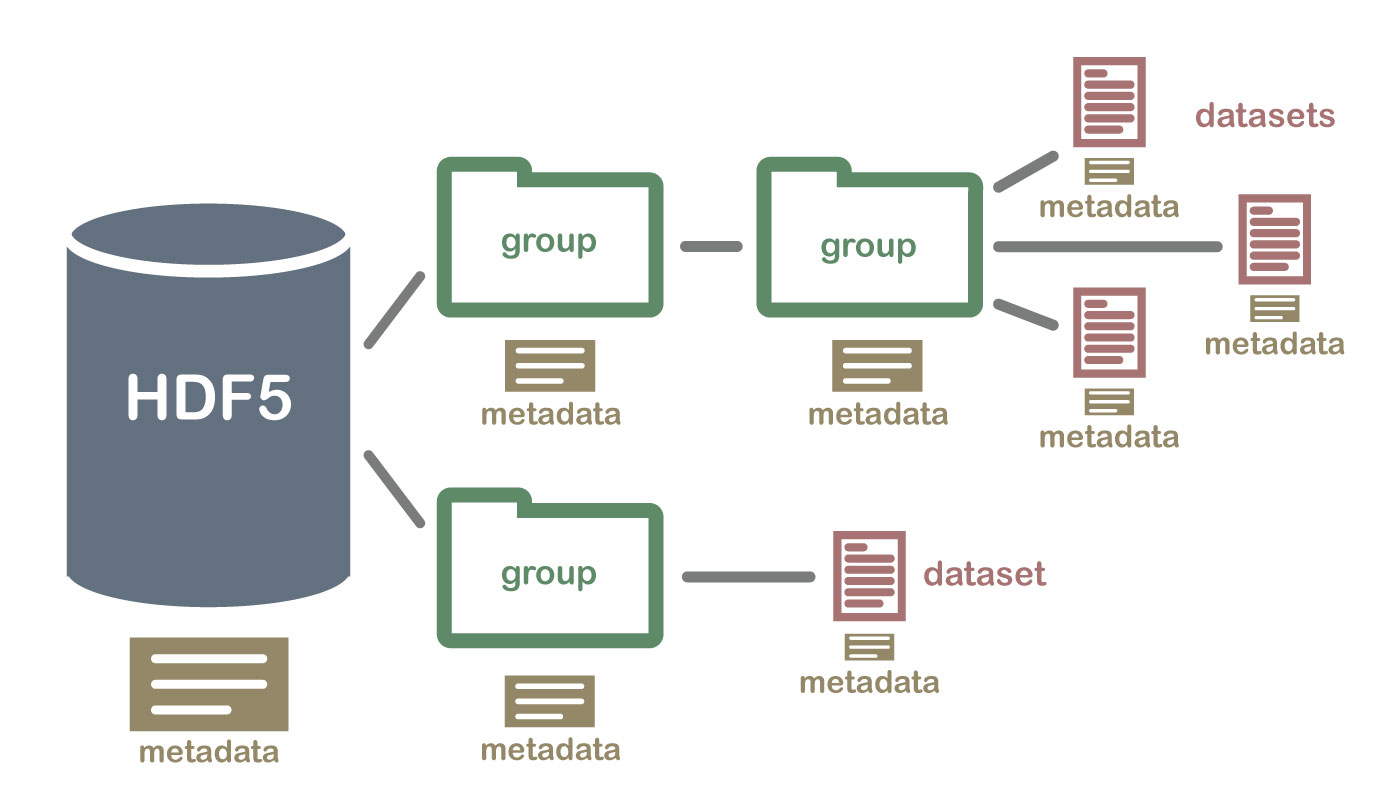
Many advantages comes with the HDF5 format:
HDF5 does not limit the size of files or the size or number of objects in a file.
HDF5 supports a rich set of pre-defined datatypes as well as the creation of an unlimited variety of complex user-defined datatypes.
HDF5, through its virtual file layer, offers extremely flexible storage and data transfer capabilities. Standard (Posix), Parallel, and Network I/O file drivers are provided with HDF5.
The HDF5 format and library are extensible and designed to evolve gracefully to satisfy new demands. HDF5 functionality and data is portable across virtually all computing platforms and is distributed with most scientific programming software languages and programming interfaces.
The DESA42 WebApp always uses the HDF5 container format internally, even if an Excel file has been uploaded.